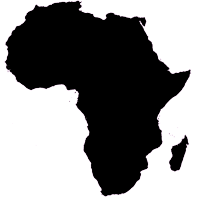 According to the latest Open Doors report from the Institute on International Education, from 2020 to 2021, the number of students from foreign nations studying in the United States decreased significantly due to the COIVD-19 pandemic. A year ago there was a slight increase of 3.8 percent. In the 2022-23 academic year, the number of international students increased from 948,519 to 1,057,188, an increase of 11.5 percent.
According to the latest Open Doors report from the Institute on International Education, from 2020 to 2021, the number of students from foreign nations studying in the United States decreased significantly due to the COIVD-19 pandemic. A year ago there was a slight increase of 3.8 percent. In the 2022-23 academic year, the number of international students increased from 948,519 to 1,057,188, an increase of 11.5 percent.
There were more than 50,000 students from sub-Saharan African nations at U.S. colleges and universities during the 2022-23 academic year. This was a whopping increase of more than 18 percent.
Among sub-Saharan African nations, Nigeria in 2022-23 sent the most students to American colleges and universities. That year, there were 17,160 Nigerians studying here, up more than 22 percent. In the 2013-14 academic year, there were just 7,921 Nigerian students at U.S. colleges and universities. Thus, over the past nine years, there has been a 117 percent increase in Nigerian students at American universities. The number of students from Nigeria was nearly three times the number of students from any other sub-Saharan African nation. Nigerians made up more than one third of all students from sub-Saharan Africa who studied in the United States in the 2022-23 academic year.
In 2022-23, Ghana ranked second, sending 6,468 students to the United States, up 31.6 percent from the previous year. Kenya ranked third this year. There were 4,059 students from Kenya at U.S. colleges and universities, up 6.8 percent from the previous year.
Ethiopia sent more than 3,000 students to study in the United States, an increase of more than 12 percent. South Africa was not too far behind with more than 2,700 students at U.S. colleges and universities. Cameroon, the Democratic Republic of the Congo, Rwanda, Zimbabwe, Uganda, and Cote d’Ivoire each had more than 1,000 students studying in the United States. Other nations sending more than 500 students to study in the United States were Tanzania, Angola, and Zambia.
All told, 51 nations from sub-Saharan Africa had college students studying in the U.S. during the 2022-23 academic year.
Undoubtedly, some of these students from sub-Saharan African nations such as South Africa, and Zimbabwe are White, but there is no data to report on the racial or ethnic makeup of this group of African students at U.S. colleges and universities.











